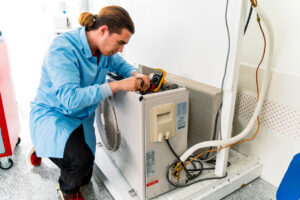Everyone agrees a fireplace adds beauty, elegance and warmth to your home.
7 Reasons, Gas Fireplace over Wood Burning
If you are building a home or renovating, you might want to consider adding a fireplace and enjoy its heat and glowing light on dark and chilly nights. Many people often wonder which type of fireplace to choose for their home. Before making any decisions, there are many factors that you should consider. Such as:
- Cost Gas versus wood
- Comparison of efficeny
- Cleanliness of both gas and wood
- Safety Ratings of wood versus gas
1. Cost
Cost is often the most important consideration when making any sort of home improvement. This is also true for the installation of a fireplace. A gas fireplace requires less of a surrounding structure compared to a wood burning fireplace and adds considerable resale value to your home.
Since less space is needed for a gas fireplace, it offers more flexibility in terms of installation. A gas fireplace can be directly vented to the outdoors through an exterior wall, with no vertical chimney needed. It can also be installed into walls or it can be freestanding within a room. If you have an existing masonry fireplace, you can have it converted to gas.
Gas fireplaces require less expensive maintenance than a wood burning fireplace as well. Rain and the elements can cause excessive wear and tear on a chimney’s mortar, necessitating costly tuck pointing.
Loose or missing chimney flashing can cause a water leak into your house, which could result in costly repairs to your ceilings, drywall and rooftop.
A wood burning fireplace requires a substantial flue for safe venting of combustion products, in order to protect your house from embers. Either a cement block with a clay liner or a multi-layered stainless steel liner is required by most city building codes in order to burn wood in a fireplace.
These systems are pricey to install and need to be inspected on an annual basis. Chimney sweep services also add to the lifetime cost of operating a wood burning fireplace.
2. Storage
A gas fireplace does not require that you store any fancy tools or a large supply of split and dried wood.
There is no problem with getting the fuel, as natural gas flows through underground pipes, or you can use propane that is delivered to a holding tank and stored on your property.
These types of fuel are inexpensive and you do not have to do any manual labor to get the fuel into the fireplace.
A wood burning fireplace requires a considerable amount of storage.
Just one cord of split fire wood consists of a pile that measures 4′ high x 4′ wide x 8′ long. You cannot store it inside of your house, as it may become unsuitable for burning.
The wood should not be stored right up against your house either, as wood destroying insects such as termites and carpenter ants may infiltrate it and get into the joists and beams of your house.
Large piles of wood also attract potentially harmful spiders such as the brown recluse. If you purchase wood that has already been cut and split, you will pay a premium.
When you are burning a fire within the fireplace, you will constantly have to attend to the wood as it burns, moving it around with the pokers and making sure it is arranged properly and evenly as the fire burns.

3. Cleanliness
A gas fireplace helps to keep the air in the house clean. The gas emits less soot and other particles compared to the burning of wood. If your house is not properly ventilated, the soot can drift through your rooms and leave a sticky, dirty layer all over everything.
A wood burning fireplace requires that its chimney be cleaned at least once per year. Hauling wood in from the outside wood pile can leave little bits of debris all over the house. Even after the fire is extinguished, sloppy piles of ash remain.
4. Ease of use
A gas fireplace is convenient and simple to operate. The procedure for igniting the fire is straightforward and you do not have to wait and attend to the fire as it gets going. Just an off and on switch or even a remote control are all that is required for you to control your gas fireplace.
With a wood burning fireplace, the procedure for building and igniting a fire is not so simple. For new homeowners, the process can be frustrating and time consuming, with hours spent rolling up logs of paper and procuring long matches and the other necessary supplies.
5. Safety and Insurance
When any type of a fireplace is installed correctly and with proper seals and venting systems, it is safe to use. However, a gas fireplace has a safety shutoff system that prevents any gas from leaking when there is no fire to burn the fuel.
An electronic ignition is required to start a fire. In the fireplace, the level of a gas flame is always the same, so that there is no big fire and the size or heat of the flames does not get out of hand.
In a wood burning fireplace, the burning process creates creosote in the chimney.
Creosote is a flammable material and can be highly combustible if it is allowed to remain on the interior surface of your chimney. To make a wood burning fireplace safer, you should stick with burning freshly cut wood.
You can also have a chimney service install a steel screen and a cap. These devices help to stop burning sparks from jumping out of the fireplace.
Before choosing a gas or wood burning fireplace for your home, check with your home owner’s insurance agent or refer to the details of your existing policy.
Some insurance companies add a surcharge to your premium in order to cover the increased fire risk of a wood burning fireplace.
6. Efficiency
When you are burning a fire, you likely want to enjoy the warmth provided by the fuel. A gas fireplace has a glass front, which stops the warm air in your home from going up the chimney when the fireplace is not being used. This creates better control of the combustion air when the fireplace is in use.
A gas fireplace has high heat output ratings because it is manufactured with newer energy, efficient technology and materials. You can get as much as 75 to 99 percent of the energy from natural gas or propane back as heat, which is as efficient as your home’s furnace.
This is compared to the energy efficiency of a wood burning fireplace, which averages just 10 to 30 percent efficiency at the conversion of fuel to heat.
A wood burning fireplace also siphons off warm air from within your home’s living spaces when it is not in use. While a wood burning fireplace is lit, it sends the room’s heated air up the chimney, resulting in cold, drafty areas in the corners of the room and around the perimeter walls.
7. Aesthetics
A gas fireplace is designed by professionals who have aimed to create an attractive and aesthetically appealing finished look. Within the fireplace, you can choose from options such as realistic looking ceramic logs.
Other popular interior fireplace options include stones, rocks, quartz or coals. These parts can withstand the heat of daily fires for many years without needing to be replaced.
Gas fireplaces also come in many different finishes, such as veneered, sculpted or metallic fronts. Many also come with attractive glass fronts so that you can enjoy the reflection of the fire as it burns.
A wood burning fireplace has a traditional special charm and a long standing place in history.
Many people enjoy the scent of a wood burning fireplace, although it might not be ideal for people who have breathing problems or medical conditions such as asthma or other.
Either type of fireplace provides you with the relaxing and inviting atmosphere that makes the room enjoyable to sit in and relax.
There are many benefits to choosing a modern and energy efficient gas fireplace. You do not have to do as much work or spend as much of your time, energy or money in attending to the fire when natural gas or propane are used as the fuel.
You will also have fewer maintenance and installation expenses. Gas fireplaces also do not need frequent cleaning and inspection like a wood fireplace does.
While a wood burning set up is a more traditional choice, a gas fueled fireplace is a perfect addition to your energy efficient home and lends itself to a luxurious and easy going lifestyle so that you can spend more of your time enjoying your home and less time maintaining it. Learn more about gas fireplace installation at Nice Heating and Air.
 SEE OUR SPECIALS
SEE OUR SPECIALS SCHEDULE SERVICE
SCHEDULE SERVICE





 Call 703-884-2376
Call 703-884-2376


